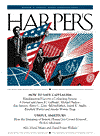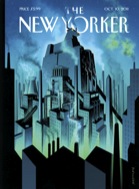
SOUNDTRACK: ELI KESZLER & SO PERCUSSION-“Archway” (Field Recordings, July 12, 2013).
 This Field Recording [Eli Keszler & So Percussion: Making The Manhattan Bridge Roar And Sing] takes place under the Manhattan Bridge. Installation artist and drummer Eli Keszler wonders, When does an instrument become a sculpture? Or can it become something architectural?
This Field Recording [Eli Keszler & So Percussion: Making The Manhattan Bridge Roar And Sing] takes place under the Manhattan Bridge. Installation artist and drummer Eli Keszler wonders, When does an instrument become a sculpture? Or can it become something architectural?
I didn’t know Eli, but I know his partners Percussion [Eric Beach, Josh Quillen, Adam Sliwinski and Jason Treuting] from a fantastic Tiny Desk Concert. But this was my first exposure to them in the real world. Their combination of crotales and big strings is at once bizarre, otherworldly, interminable and very cool.
There is magic in pure sound. And few know that truth as well as the quartet called So Percussion and the installation artist and drummer Eli Keszler — artists who, before this spring, had never met. We thought that they might find kindred spirits in each other. So as a matter of artistic matchmaking, we at NPR Music decided to invite them to meet and collaborate on a new work that would have its world premiere at Make Music New York, the annual summer-greeting festival of free outdoor concerts across the city. And along the way to creating a world premiere, they brought a New York landmark in as a sixth instrumental partner: the Manhattan Bridge. They named their piece Archway.
So Percussion says that they wrote this piece just for the installation. The drummers are present at their drums, but what about the rest?
Using a scissor lift, Keszler and an assistant began the long process of fastening piano wires attached to two large weighted boxes to the tops of lampposts near the DUMBO Archway beneath the bridge. More wires stretched from one of the lampposts up to the Manhattan Bridge itself.
The piece juxtaposes light otherworldly rings and deep resonating, almost mechanical lows. Complete with occasional drum smacks.
By the time that their performance rolled around at 6:30 PM, Keszler and So Percussion created fascinating layers of sound. The shimmering, nearly melodic lines produced by bowing small cymbals called crotales offset sharply articulated snare drums and the grunting roars, squonks and groans of the piano wire installation. It was urbane and thoroughly urban music for a signature city setting.
And so for about 11 minutes you get a combination of low grunting sounds–the engines or the wires?–and chiming crotales. Occasional snare hits punctuate the sound.
It starts with the mechanical sounds and the sounds of the crotales reverberating. About 3 minutes into the piece a snare drum and rhythm is added, but very minimally and only for a instant. Around 4 minutes the drummers start adding more percussive and less tonal sounds, but that is brief and soon enough everyone is doing his own thing, while Keszler plays a very jazzy style of drum on the drum and crotales. Others are hitting snares and sides of drums.
But by the 10 minute mark it is a full-on drum solo with the gentlest/flimsiest drum sticks around–making little taping sounds (but a lot of them).
I feel like not enough is made of the piano wires –I would love to hear more from them. I assume that in a live setting all of the cool sounds (ones that become more audible around the 10 minute mark are just reverberating around and around the arch–something that even the best mic’s can;t pick up adequately.
It’s still neat to watch, though.
[READ: January 28, 2008] “The Only Sane Man in a Nuthouse”
This is an excerpt from And the Hippos Were Boiled in Their Tanks, a novel he wrote with Jack Kerouac. They alternated chapters. It was written in 1945 but unpublished until 2008.
On a Wednesday night, he went out with Al, Ryko and Phillips. Agnes didn’t want to join them–she was broke–some people have some pride. He joked at Philip that he was an artist so he didn’t believe in decency, honesty or gratitude.
They went to diner and a movie and then went to MacDonald’s Tavern, which is a queer place and it was packed with fags all screaming and swishing around.
The rest of the story is a tale of an older gay men checking out the younger men, straight men howling for women, and men hitting on anyone that moves. (more…)





